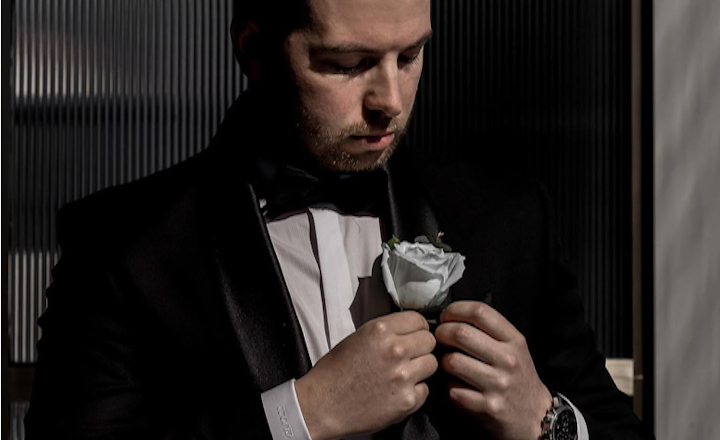
Every detail matters when it comes to planning your wedding day, and selecting the right attire is no exception. Your wedding suit not only reflects your personal style but also sets the tone for the entire event. From classic elegance to modern sophistication, finding the perfect suit is essential to ensure you look and feel your best on this momentous occasion.
Choosing the Perfect Wedding Suit
When it comes to choosing the perfect wedding suit, there are several factors to consider. First and foremost, focus on the fit. Your suit should be tailored to your body, enhancing your silhouette and providing comfort throughout the day. Whether you prefer a slim fit or a more relaxed cut, prioritize a fit that flatters your physique.
Style is another crucial aspect to consider. Opt for a style that reflects your personality and complements the overall aesthetic of your wedding. From traditional tuxedos to contemporary suits, explore different options to find the perfect match for your vision.
The fabric of your suit also plays a significant role in its overall look and feel. Consider the season and climate of your wedding day when selecting the fabric. Lightweight fabrics such as linen or lightweight wool are ideal for summer weddings, while heavier fabrics like tweed or wool are perfect for colder climates.
Of course, budget is an important consideration as well. Set a realistic budget for your wedding suit and explore options that align with your financial constraints. Remember, quality is key, so prioritize investing in a well-made suit that will last for years to come.
The Role of Groomsmen Suits
In addition to the groom's suit, the attire of the groomsmen also plays a significant role in creating a cohesive and polished look for the wedding party. Coordinate the groomsmen's suits with the groom's attire to ensure a harmonious aesthetic.
Consider factors such as color, style, and accessories to create a cohesive ensemble for the entire wedding party. Whether you opt for matching suits or mix and match styles, ensure that the groomsmen's attire complements the overall theme of the wedding.
Women Bespoke Suits in Adelaide
While traditional wedding attire often focuses on suits for men, there is a rising trend in bespoke suits for women as well. Women's bespoke suits offer a unique and elegant alternative to traditional bridal gowns, allowing brides to express their personal style with confidence and sophistication.
Bespoke suits are custom-made to fit the individual measurements and preferences of the wearer, ensuring a perfect fit and unparalleled comfort. From tailored jackets to perfectly tailored trousers, bespoke suits for women are designed to flatter the feminine figure while exuding timeless elegance.
Introducing Lamilago Bespoke Tailors Adelaide
Located in the heart of Adelaide, Lamilago Bespoke Tailors is your premier destination for exquisite wedding suits and bespoke attire. With a passion for craftsmanship and attention to detail, Lamilago Bespoke Tailors offers a curated selection of suits crafted from the finest fabrics and materials.
At Lamilago Bespoke Tailors, every suit is meticulously tailored to your exact specifications, ensuring a perfect fit and unparalleled comfort. From classic designs to modern silhouettes, their expert tailors will work closely with you to bring your vision to life, creating a suit that reflects your personal style and complements the overall aesthetic of your wedding.
Location and Contact Information
If you're ready to find the perfect wedding suit, visit Lamilago Bespoke Tailors at G5,G6, 50 Rundle Mall, Adelaide SA 5000. For more information or to schedule a consultation, contact them at [contact information].
Testimonials from Satisfied Customers
- "I couldn't be happier with my experience at Lamilago Bespoke Tailors. From the initial consultation to the final fitting, their team was professional, attentive, and truly committed to ensuring that my suit exceeded all expectations." - John D.
- "The quality of craftsmanship and attention to detail is unparalleled. My bespoke suit from Lamilago Bespoke Tailors fit like a glove and made me feel confident and stylish on my wedding day." - Sarah W.
Conclusion
Your wedding day is a celebration of love, commitment, and new beginnings, and your attire should reflect the significance of this momentous occasion. From choosing the perfect wedding suit to coordinating the attire of the entire wedding party, every detail matters when it comes to creating a memorable and stylish wedding day look. Visit Lamilago Bespoke Tailors in Adelaide for premium wedding suits crafted with precision and passion, and make a lasting impression on your special day.
FAQs
1. Can I schedule a consultation with Lamilago Bespoke Tailors to discuss my wedding suit preferences?
Yes, Lamilago Bespoke Tailors offers personalized consultations to discuss your wedding suit preferences and provide expert guidance.
2. How far in advance should I order my wedding suit from Lamilago Bespoke Tailors?
It is recommended to place your order for a wedding suit at least 3-6 months in advance to allow ample time for fittings and alterations.
3. Do I need to bring any specific measurements or materials to my consultation with Lamilago Bespoke Tailors?
No, Lamilago Bespoke Tailors will take all necessary measurements and provide guidance on fabric selection during your consultation.
4. Can Lamilago Bespoke Tailors accommodate special requests or customization options for wedding suits?
Yes, Lamilago Bespoke Tailors offers a range of customization options to ensure that your wedding suit is tailored to your exact specifications.
5. What sets Lamilago Bespoke Tailors apart from other bridal boutiques?
Lamilago Bespoke Tailors prides itself on its commitment to craftsmanship, attention to detail, and personalized service, ensuring that every customer receives a truly exceptional experience.







